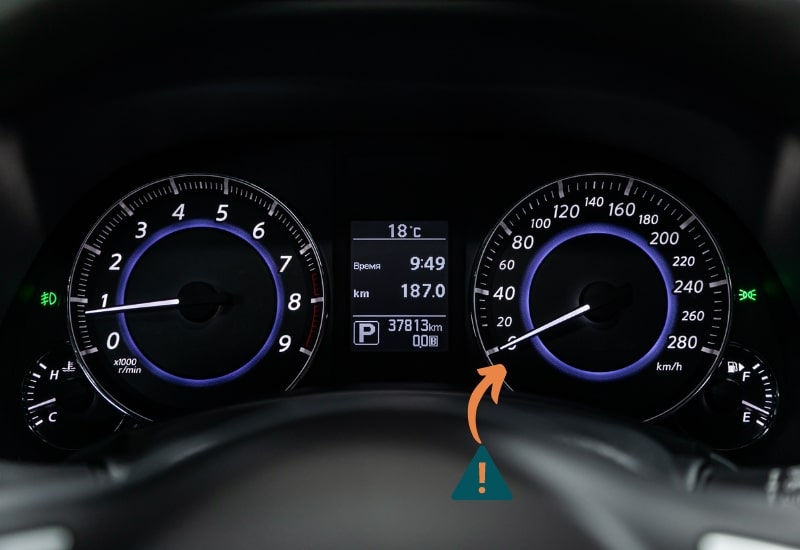
Knowing just how fast you’re going isn’t just a handy way to avoid expensive speeding tickets. It’s also an absolute requirement for your car to be considered road legal. When your speedometer stops working, it’s more than just a safety issue; a lot of states require you to keep it off the road until it’s fixed.
The most common reasons why a speedometer stops working are a bad speed sensor, a damaged hairspring on an analog speedometer, loose/damaged wiring, or perhaps even a faulty engine control unit. To find the mechanical gremlin causing this quirky little problem, we’ll have first to consider the different types of speedometers and what makes them tick.
In this article, we will delve into possible reasons why your speedometer may not be functioning correctly. Additionally, we will provide solutions for these issues and discuss the potential costs involved in fixing them.
Types of Speedometers and How They Actually Work
For the most part, there are two types of speedometers, analog or mechanical and electronic or digital. While they both do essentially the same thing and work on many of the same principles, some key differences might come into play when diagnosing a problem.
1. Mechanical or Analog Speedometers
Mechanical or “Analog” speedometers are technically classified as “Eddy-Current Speedometers.” This is due to how they use special magnetic eddy currents to read and display the speed of your car.
It has a special drive cable that’s connected to the transmission shaft, which holds an internal magnetic mandrel. As the shaft rotates, the mandrel spins with it, and this information is translated through the cable to a special spiral gear that rotates in time with the mandrel. It’s attached to the permanent magnet seated within the speed cup. As the magnet rotates, it produces a magnetic field.
The field then creates a drag force that pulls on the speedometer needle. The needle moves until the resistance of the hairspring causes it to stop at the relative road speed.
When an analog speedometer stops working, the problem can be in the drive cable, the mandrel, the hairspring, the spiral gear, or the magnet cup.
2. Electronic or Digital Speedometers
Electronic or “Digital” speedometers replace the drive cable and many components with a special speed sensor to compute the vehicle’s speed accurately. Inside the sensor, there’s a metal disk with geared teeth, along with a stationary detector and a magnetic coil.
Similar to a mechanical speedometer, the disk is attached to the car’s transmission shaft. As the shaft rotates, the teeth on the disk momentarily interrupt the coil’s magnetic field. This triggers the detector, which sends a pulse to the car’s computer. The ECU then uses these pulses to determine the car’s speed, the distance the car has traveled, and the engine’s rotational speed.
In most modern vehicles, the speed comes up on a digital display screen on the dash. Though some automakers translate the car’s speed to be displayed on a traditional analog display with a needle. Even though the speed information was gathered from an electronic system.
So, your car can have an analog needle display and still technically use an electronic speedometer. Though all “Digital” displays are electronic speedometers. You’ll want to remember this when determining what’s causing your speedometer to stop working.
If you’re unsure what type of speedometer your car has, you can always check your owner’s manual or the repair guide for your make and model.
4 Telltale Signs Your Car’s Speedometer Isn’t Working
A speedometer problem doesn’t always pop up out of the blue with a dead needle or a digital display that reads zero. There are some subtle signs that your speedometer or one of its critical components is about to fail.
1. The Engine Feels Down on Power
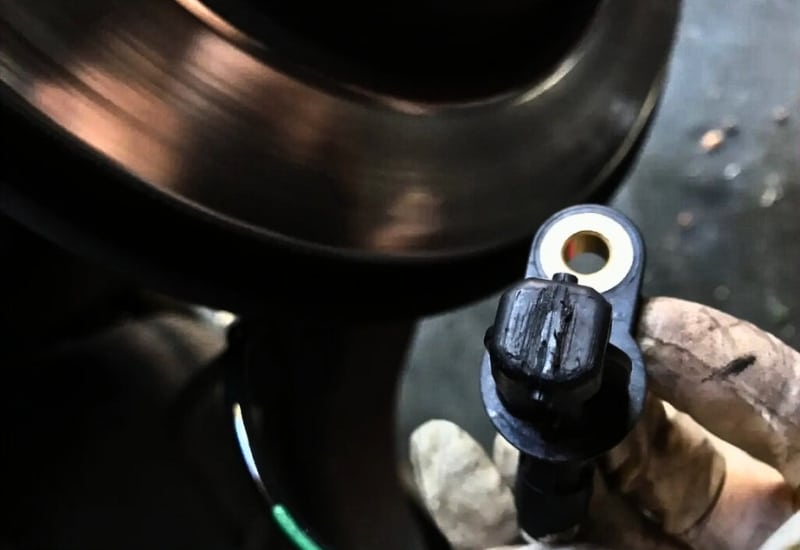
Many modern cars have ECUs that rely on inputs from the speedometer or wheel speed sensors to adjust the engine’s timing accurately. When the information being sent to the ECU is wrong or intermittent, it gets the fuel/air mixture and sparks timing wrong, causing the car to feel down on power.
This is more likely to be the case if you have a newer car with a digital or electronic speedometer. It could even cause a check engine light to come on.
2. The Cruise Control Doesn’t Hold a Consistent Speed
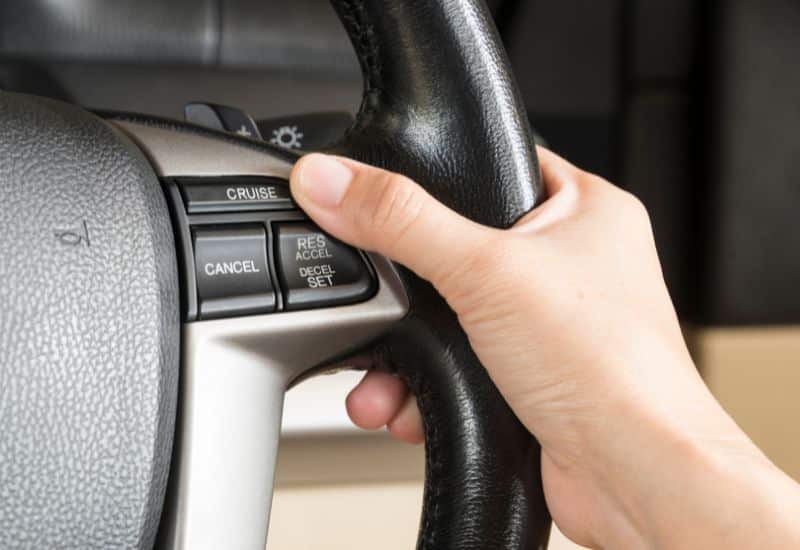
When the speedometer has a problem or a wheel speed sensor is going out, your cruise control can fail to come on or struggle to hold a consistent speed. Here again, the ECU isn’t getting the correct information it needs, and it settles to set or hold the throttle in the correct position for the road conditions.
Sometimes this can start out subtle. You might set the cruise control on a level stretch of road, and everything seems fine. Then the terrain changes and the ECU would normally advance or retard the engine timing to keep a consistent speed; only the cruise control feature doesn’t respond.
You notice the problem, take over the pedal, and get through the change. Then you set the cruise again, only to have the problem recur.
If you have an electronic speedometer, this could be due to the wheel speed sensor or the speedometer itself failing. However, it could also be an ECU issue.
3. The Speedometer Is Off or Reads Zero MPH
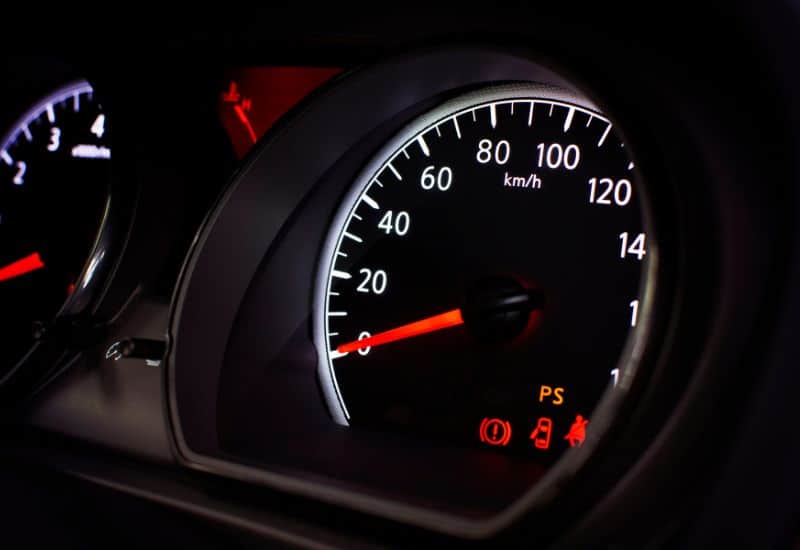
A failing speedometer might display modest or even grossly inaccurate speed compared to how fast you are really going. In an analog speedometer, you might notice the displayed speed gradually creeping up, or fading lower, even if you’re holding the accelerator pedal steady. This could be a failure of the hairspring or the mandrel itself.
Electronic speedometers that read grossly inaccurate speeds can be due to any number of electronic failures. However, a bad wheel speed sensor is the first place to look in a scenario like this.
4. The Check Engine Light Comes On
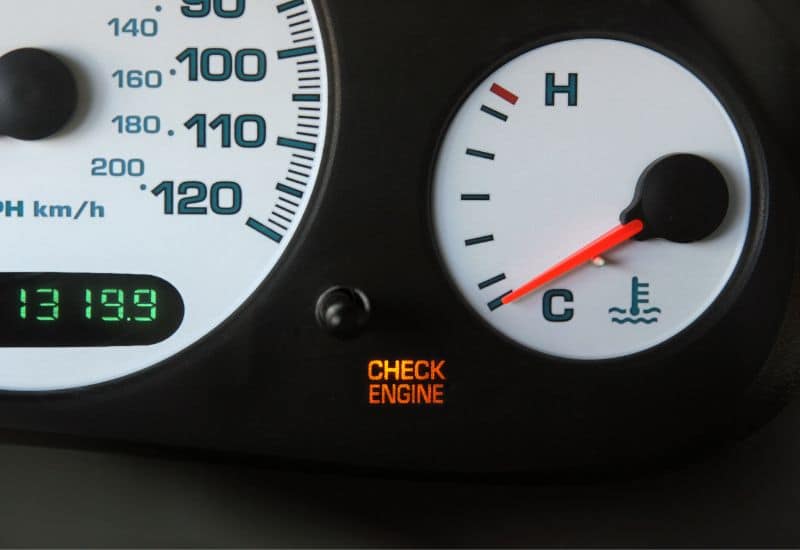
The check engine light coming on is a common sign of a problem with an electronic speedometer. The ECU relies on data from the speedometer, the wheel speed sensor, and other sensors to get the timing and fuel/air mixture right. When it’s off, it can cause various problems with engine performance, causing the ECU to turn the check engine light on.
When it does, it can throw a Christmas tree of codes, depending on what it thinks is going wrong. However, there are a few codes to keep an eye out for if it’s truly a problem with the speedometer.
5 Troublesome Reasons That Cause Your Speedometer To Stops Working
With both types of speedometers, several different things can cause them to stop working or display a grossly inaccurate reading. Some give off telltale signs, and you might even be able to get away with a quick fix. Though with most, you’ll need to replace the faulty component to get the speedometer to start working properly.
Here are the seven potential reasons that may prevent your speedometer from functioning properly:
1. A Worn-Out Speedometer Cable
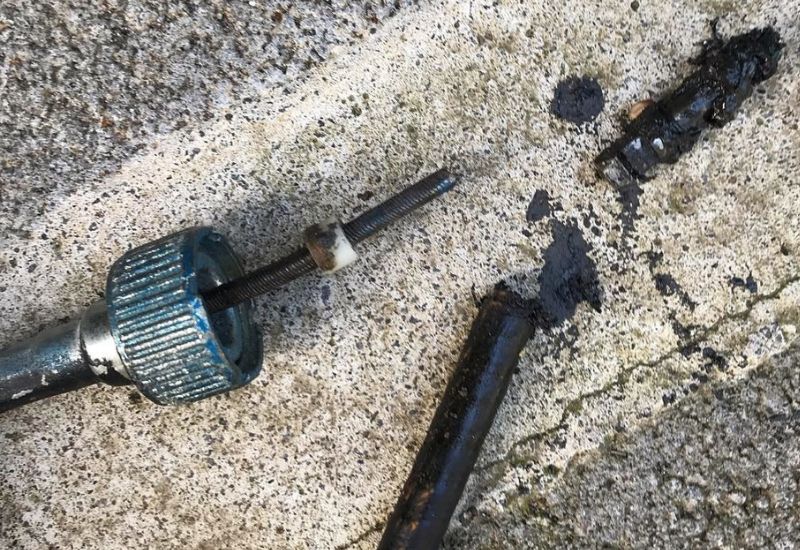
If the needle on your analog speedometer bounces around or operates intermittently, a worn-out speedometer cable might be the cause. This issue is common in older vehicles that have analog speedometers and use a physical cable to connect the transmission to the speedometer. Over the car’s lifetime, this cable undergoes significant wear and tear, potentially starting to wear out after 75,000 to 100,000 miles. If this cable sustains damage or wears out excessively, it might cause the speedometer to stop working.
How to Fix
In a case like this, the cable will need to be completely replaced. When a speedometer cable wears out in an analog speedometer, you can also bet that the gear in the magnetic cup is also about to go or has already gone. So you might need to replace the speedometer gauge itself with the speedometer cable.
2. A Worn-Out Hair Pin
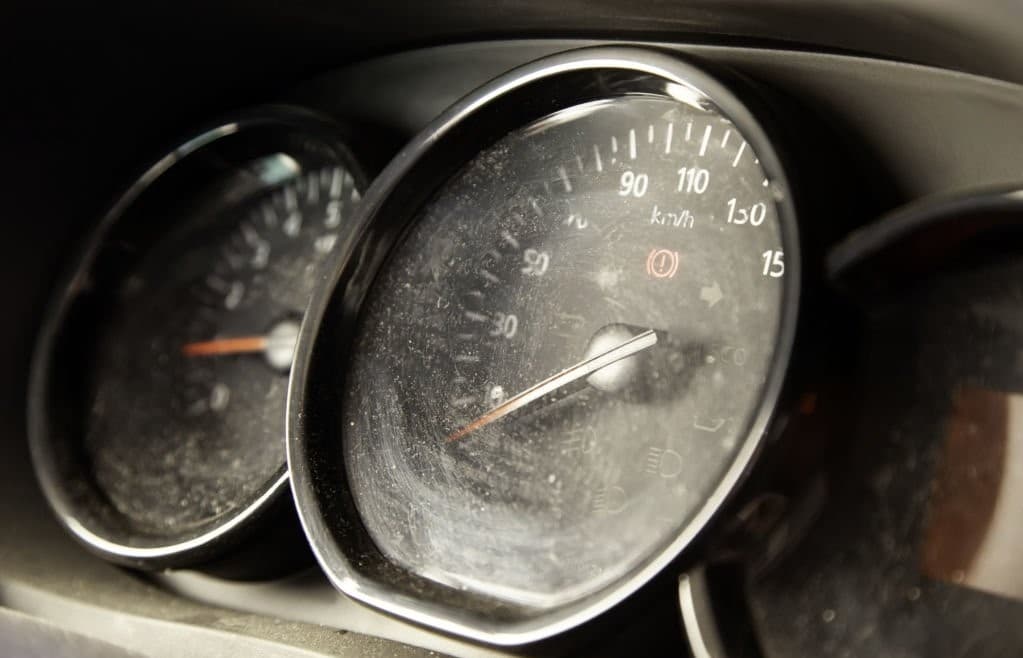
The hairpin on an analog speedometer can also give out over time. While they’re meant to be strong, they, too, might have a lifespan of only 75,000 to 120,000 miles. When it starts to go out, you might notice the needle slowly climbing or fading despite you holding the gas pedal steady.
How to Fix
With some older analog speedometers, you could replace the hairpin alone. Though in even slightly newer cars and trucks, when the hairpin goes, you must replace the entire analog speedometer.
In some older cars, you might be able to replace the speedometer yourself for under $50 in parts cost and a couple of hours of your Saturday afternoon thrown away. Though in most newer cars, you need a mechanic to tear into the dash and fiddle with sensitive electronics, so it’s better to have the professionals handle it.
The parts and labor cost of having a mechanic replace an analog speedometer can run anywhere from $175 to $275.
3. A Broken Speedometer Sensor
The Vehicle Speed Sensor (VSS) monitors the car’s speed and communicates this data to the onboard computer. If there’s a problem with the speedometer sensor or the inputs it receives, it can cause the speedometer to give erratic readings or fail to register the car’s speed, causing the speedometer to stop working correctly. This can wreak havoc with the Engine Control Unit (ECU), which uses the information from the speed sensor to help regulate the flow of fuel with the ignition timing. It also uses it for coordinating cruise control.
In a lot of these cases, the cruise control will be inconsistent or even non-existent. Eventually, the problems with the engine timing will cause the ECU to turn on the check engine light, which will also throw a bunch of codes that you can pick up on a reader.
You can test the speedometer sensor with a multimeter.
How to Fix
If you’re a reasonably capable DIY mechanic, you might be able to replace the broken speedometer sensor. It’s found in the engine bay, sometimes hiding under or around the air intake or near the firewall. You can find your specific location in the owner’s manual or repair guide.
Otherwise, having a professional mechanic replace the speed sensor will usually run between $100 to $250.
4. A Bad Fuse

In an electronic speedometer, something as simple as a bad or burned-out fuse can cause the speedometer to stop working. Depending on how your car’s electrical system and instrument cluster are wired, the blown fuse could cause some or all of the instruments to die.
How to Fix
Replacing the fuse is easy enough; you can usually find which one it is with a quick glance at the repair guide. However, the bigger concern here is what caused the fuse to blow in the first place. Usually, it’s a loose or shorted wire hiding hideously deep inside the dash or possibly even a connected door panel!
5. Bad Wiring or Loose Wiring Connections
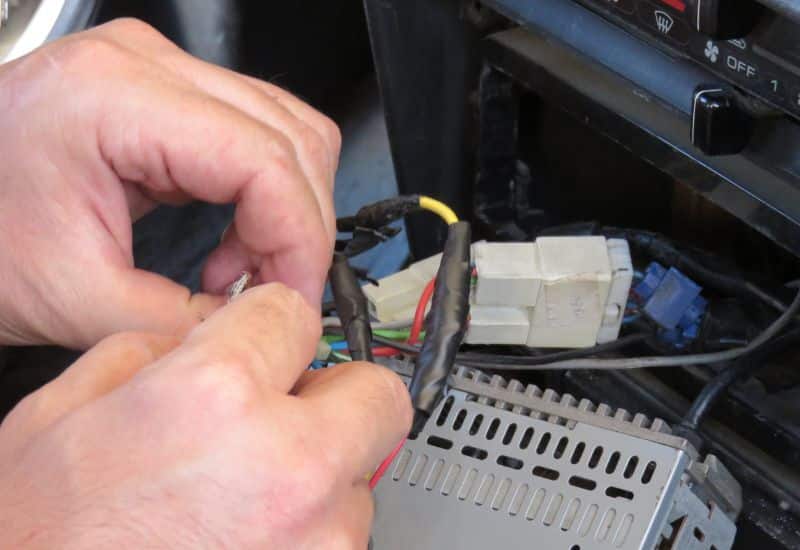
As time goes on, exposed wires can suffer damage to the protective coating causing short circuits or the wires to get knocked loose, causing a digital speedometer to fail. This usually happens in tandem with the fuse blowing.
In a lot of these cases, you replace the fuse, utter a sigh of relief, then the speedometer dies again a few minutes, hours, or days later. Finding the bad wire can be maddening, as all it takes is one fault in any one wire anywhere in the car’s interior to blow the fuse.
How to Fix
If you’re lucky, it’s a loose wire under the driver’s side dash down by the foot pedals. You might have just bumped the wire, knocked it loose, or shorted it.
If you can’t find anything under the driver’s side, then check your car’s interior electrical diagram to look for everything that shares the same fuse. If the wiring passes through anything that moves, such as the wiring loom/conduit in the door, that’s the next place you should look.
Replacing a burned-out or short-circuited wire is very cheap and something you can usually do yourself for less than $50. Though, the time it takes to find the bad wire is vexing. You can easily lose an entire Saturday taking off panels and peeling apart conduits before you find it.
The same is true for a mechanic; you’ll pay through the nose for their labor time to find the bad wire. You might get off with a $50 charge or end up eating a $500 repair bill if the bad wire is hiding deep inside the dash.
6. Malfunctioning ECU
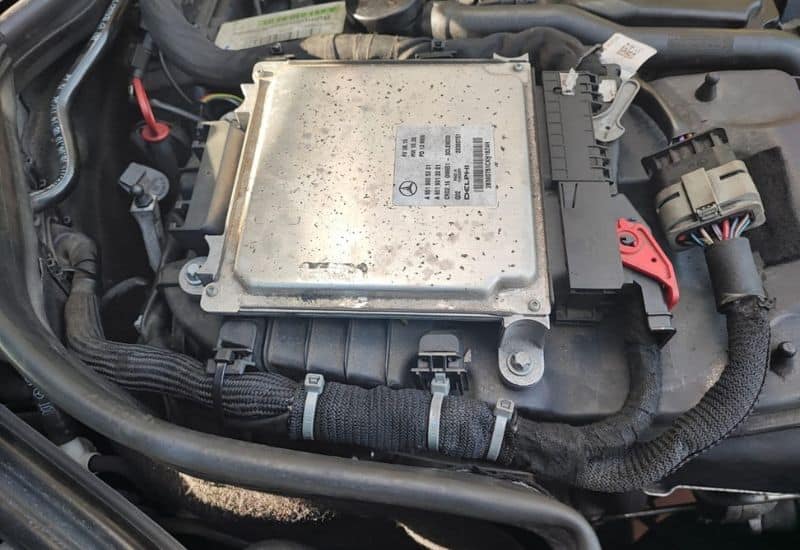
An ECU monitoring failure will usually cause the reading on a digital speedometer to drop to zero. Exactly what the fault is can be next to impossible for a DIY mechanic to determine.
Suppose you’ve noticed other problems with engine performance. Such as ugly MPG stats, trouble shifting gears, the engine running rough, stalling, or struggling to start; it might be a major fault with the ECU, and the entire unit needs to be replaced.
Sometimes the malfunctioning ECU will essentially tell on itself and turn the check engine light on. This will throw a code that might help you determine if the problem is with the ECU itself, the speedometer sensor, or one of the other speedometer components.
How to Fix
If you’re lucky, the ECU fault that’s causing the speedometer to fail will be a minor component on a circuit board that a mechanic can replace. Depending on the make and model, this might only cost you $100.
If you’ve been noticing minor engine performance issues, it might be possible for a mechanic to reset the ECU or take care of a missed software update.
The cost to reset an ECU or update its software can range from $150 to $300. If your car is still under warranty, the dealership might be able to do it for free.
If the ECU is causing major engine performance issues, along with a failed speedometer or a stone-dead instrument cluster, then the entire ECU might need to be replaced.
The cost to completely replace the ECU can run you anywhere from $350 to $750 or more.
7. A Bad Instrument Cluster
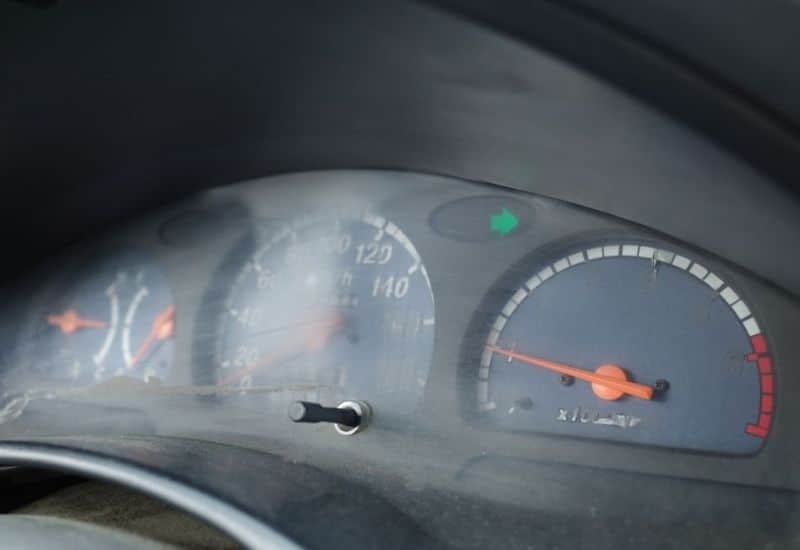
Many faults in your cluster start with an inaccurate or stone-dead speedometer. In short order, you’ll likely find other gauges stop working. While this might be an electrical issue, most of the time it’s the instrument cluster itself that is dying or burning out with a major malfunction. You might even smell burning wires as components inside the cluster fail. It could even start throwing false warning lights as internal circuits short out.
How to Fix
If the entire instrument cluster is going out and the malfunctioning speedometer was the first thing to go, then the entire cluster will need to be replaced. The cost to do this can vary wildly depending on the make, model, and type of instruments.
The cost to replace an analog instrument cluster can vary from $250 to $500.
The cost to replace a digital instrument cluster can be as much as $750 to $1,100.
Frequently Asked Questions
Can a Fuse Stop a Speedometer From Working?
A fuse running to the instrument cluster or various gauges like the speedometer can cause it to stop working. Replacing the fuse itself is easy and might give you a sigh of relief. Though many times, whatever caused that fuse to pop will cause it to go again. Usually, it’s a loose or damaged wire.
Can Changing Wheels Alter Speedometer Accuracy?
One of the most common causes of an inaccurate speedometer comes when someone increases the size of the wheels/tires. The larger tire essentially has a larger circumference and will go through fewer rotations as you drive down the road. The tires rotate slower, causing the speedometer to read a lower speed incorrectly.
If you’ve recently changed to larger wheels, you must recalibrate your speedometer. This is usually something you can do at home. However, most mechanics and tire shops can do it for you for a small fee.
Can You Still Drive Your Car If the Speedometer Doesn’t Work?
While you might be able to physically drive the car and safely keep up with other vehicles, most states make it illegal to drive with a malfunctioning speedometer. This will give you a speeding ticket and a “Fix-It” ticket. You’ll also be instructed to stay off the roads until the speedometer is fixed. You could face serious legal trouble if caught with an active fix-it ticket for a non-functioning speedometer.
Can You Use Your Phone as a Speedometer Instead?
GPS apps on your smartphone can usually give you a reasonably accurate speed reading. Though you should look at this as a way to get by until you can fix your malfunctioning speedometer. In most states, the rules of the road say that you still have to have a properly functioning speedometer.
If you use a speedometer app, ensure you follow your state’s “Hands-Free” laws. If you do get pulled over, you can expect serious questions about why you have a speedometer app running on your phone!
How Much Does It Cost to Fix a Speedometer?
The parts cost for an analog speedometer is usually less than $50. Though having a mechanic install it can easily add another $125 to $200 to the final bill.
The cost to have a mechanic fix or replace a malfunctioning digital speedometer can run from $250 to $500 or more. It could easily go up from $750 to $1,100 if the entire instrument cluster needs to be replaced.
Conclusion
When your speedometer stops working, you can be a safety risk to yourself and other motorists. If you have an analog speedometer, chances are good that the problem is a worn-out speedometer cable, a worn-out speedometer gear, or the hairpin that regulates the needle. In a lot of these cases, the cable needs to be replaced, and you’ll probably need to replace the speedometer as well.
If you have an electronic or “Digital” speedometer, the number of potential gremlins to deal with increases exponentially. The first thing to do is check for any burned-out fuses running to the instrument cluster. You can replace the fuse but be prepared for it to pop again shortly. If it does, you’ll need to hunt down the loose or damaged wire causing it to fail.
If you get a check engine light along with a malfunctioning speedometer, you can use the code reader to help figure out where the fault is. In most of these cases, it’s the speedometer sensor dying, and it’s causing the ECU to get the timing of the engine wrong. It will usually throw a Christmas tree of codes, but the ones that point to a fault with the speed sensor are codes P0500, P0501, P0700, and P0716.
In a scenario like this, you’ll likely need to replace the speed sensor. Though make sure to test it first with a multi-meter, as other ECU-specific faults could be afoot.

Written By
Jason Farrell
Jason Farrell is a certified master technician, the editor of Mechanic’s Diary in Pittsburgh, Pennsylvania. He is ASE (Automotive Service Excellence) certified and earned a Bachelor’s Degree in Automotive Technology from Pittsburg State University. With nearly 18 prior years of experience in the automotive field, he has extensive knowledge about Domestic, European, and other foreign makes and models of cars and light trucks. Jason’s experience working as a technician and service manager at dealerships, gave him the experience and know-how of most aspects of inspection, diagnosis, and repair from engine and drivability to electrical, HVAC, brakes, steering and suspension and everything in between.

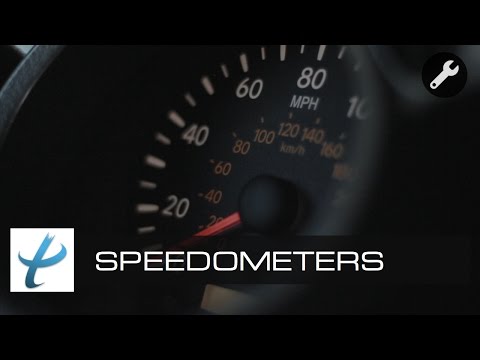
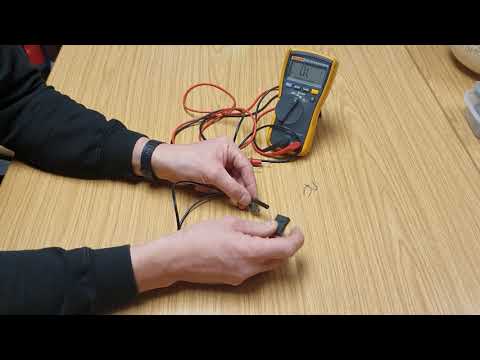
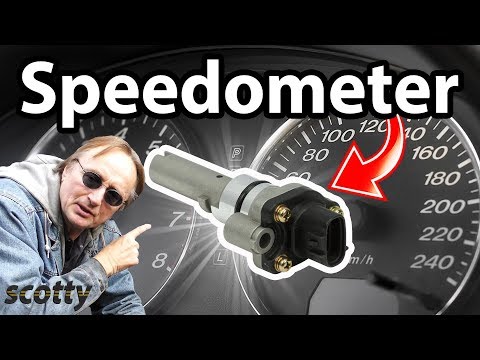
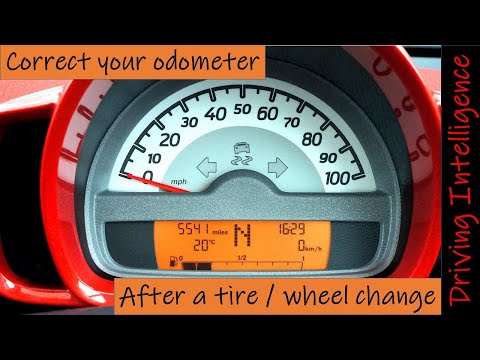
HI Thanks for your good Imfo